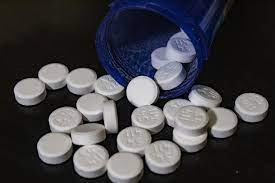Buprenorphine Remains One Of The Most Effective Drugs For The Treatment Of Acute Pain, Chronic Pain, And Addiction
Buprenorphine is a powerful,
long-acting opiate drug. It can alleviate the pain of post-traumatic stress
disorder, also known as PTSD, and other serious psychological and physical
disorders. Buprenorphine not only is not usually used as an opiate pain pill.
Buprenorphine can also be used for non-opiate purposes not specifically listed
in this drug guide. Buprenorphine belongs to a family of long-acting opioid
agonists or narcotics. It creates its effects by exerting opiate actions on the
opioid receptors in the brain. The majority of its derivatives are readily
absorbed into the bloodstream. However, it can be metabolized and then released
through the actions of opioid receptors in the GI tract and liver. This is why
it is primarily used as an injection in medical emergencies, where it is
quick-acting, has little or no tolerance, and is highly efficient.
Buprenorphine works as an opioid
agonist by causing rapid and sustained dilatation of the pupil's pupils during
rapid eye movement (REMS) in patients who have taken the medication in
conjunction with alcohol or benzodiazepines. Due to its fast action in the GI
tract, Buprenorphine cannot be habit-forming, as it requires to be taken
continuously over a long period of time. This characteristic allows it to be
used as an addition to conventional pain management in the treatment of
refractory conditions such as asthma and COPD, which are caused by constant
obstruction of the respiratory tract.
The most common side effects of
Buprenorphine are constipation, which may result from insufficient bowel
elimination, and increased urge to urinate. In addition, a patient experiencing
any of the following should not take Buprenorphine: narcotics, alcohol, heroin,
hydrocodone, propoxurics, methadone, oxycodone, and tramadol. In the recent
past, the U.S. Food and Drug Administration (FDA) approved Cassipa
(buprenorphine and naloxone) sublingual film (applied under the tongue) for the
maintenance treatment of opioid dependence.


Comments
Post a Comment